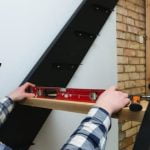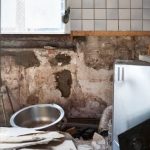Are you tired of calling a professional every time something breaks in your home? Why not take matters into your own hands and embrace the world of DIY home repairs and improvements?
With the growing popularity of DIY projects, more and more homeowners are discovering the benefits of saving money and gaining a sense of accomplishment through tackling their own household tasks. Whether you’re a beginner or an experienced DIY enthusiast, this article will provide you with essential tips, tools, and techniques to empower you to take on any project.
In today’s fast-paced world, the allure of tackling home repairs and improvements yourself has never been stronger. The satisfaction that comes from completing a task with your own two hands is unparalleled.
Not only does it save you money by avoiding costly professional services, but it also fosters a sense of self-reliance and accomplishment. From hanging a picture frame to fixing a leaky faucet, there is an array of DIY possibilities that can transform your space while giving you a newfound sense of pride in your home.
One of the key advantages of embarking on DIY projects is the opportunity to personalize your living space to reflect your unique style and taste. Instead of settling for mundane off-the-shelf solutions, DIY allows you to unleash your creativity and elevate your surroundings.
By learning essential skills and having the right tools at hand, you can tackle everything from basic repairs to ambitious renovations. So roll up your sleeves, grab that toolbox, and get ready to explore the satisfying world of DIY home repairs and improvements.
Essential DIY Tools Every Homeowner Should Have
To effectively take on DIY home repairs and improvements, it is essential for homeowners to have a set of basic tools. These tools not only make the tasks easier and more efficient but also save the homeowner from having to call a professional for minor repairs. Below are some must-have tools that every homeowner should consider investing in:
Screwdriver Set
A quality screwdriver set is an indispensable tool for any homeowner. It should include both flat-head and Phillips-head screwdrivers in various sizes. With a screwdriver set, you can easily tighten loose screws or remove and replace them when needed.
Hammer
Another essential tool is a hammer, which is useful for various tasks around the house. Whether you need to hang picture frames or assemble furniture, a sturdy hammer with a comfortable grip will come in handy.
Tape Measure
Accurate measurements are crucial when it comes to DIY projects, making a tape measure an essential tool to have on hand. From measuring spaces for new furniture or determining the length of materials needed for repairs, a reliable tape measure is invaluable.
Adjustable Wrench
An adjustable wrench allows homeowners to tackle plumbing repairs, as well as tightening or loosening nuts and bolts. This versatile tool eliminates the need for multiple wrench sizes and offers convenience when working on various projects.
While purchasing these tools from reputable brands may be ideal, budget-friendly options are available as well. Many local hardware stores offer affordable sets that contain all the necessary tools for basic home repairs and improvements.
Proper maintenance of these tools is also crucial to ensure they remain effective over time. Keep them clean and dry after each use to prevent rusting, and periodically oil any moving parts to maintain smooth operation.
Having these essential DIY tools readily available equips homeowners with the necessary resources to handle basic repairs and improvements around the house. With these tools in hand, homeowners can save money, gain a sense of accomplishment, and take pride in maintaining their homes.
Safety First
The Importance of Safety in DIY Home Repairs
When it comes to taking on DIY home repairs and improvements, safety should always be the top priority. While these projects can be incredibly rewarding, they also come with potential risks and hazards. By following proper precautions and tips, homeowners can ensure a safe and successful outcome.
Checklist of Safety Equipment and Gear
Before diving into any DIY project, it’s essential to have the right safety equipment and gear on hand. Here is a checklist to help homeowners prepare:
- Safety goggles: Protect your eyes from debris or flying particles.
- Gloves: Keep your hands safe from sharp edges, chemicals, or hot surfaces.
- Dust mask: Prevent inhaling dust or harmful fumes during sanding, painting, or demolition tasks.
- Ear protection: Safeguard your hearing when using power tools that generate loud noise.
- Non-slip footwear: Wear closed-toe shoes with good traction to prevent slips and falls.
- First aid kit: Have a well-stocked first aid kit easily accessible in case of minor injuries.
Remember that different projects may require specific safety equipment not mentioned above. Always research and identify the necessary gear for each task.
Avoiding Common Injuries in DIY Home Repairs
To create a safe environment while tackling home repairs, it’s crucial to be aware of common injuries and take steps to avoid them:
- Cuts and scrapes: Always use caution when handling sharp tools or materials such as glass or metal. Keep a clean work area, properly dispose of waste, and handle tools carefully.
- Falls: Use proper ladder safety techniques when working at heights. Ensure the ladder is stable before climbing and never overreach while on it.
- Electrical shocks: If you are working on electrical repairs or installations, turn off the power supply at the circuit breaker and use a voltage tester to ensure there is no live current before starting any work.
- Inhalation of toxic materials: When working with chemicals, paints, or solvents, make sure to do so in a well-ventilated area. Wear a dust mask or respirator when appropriate.
- Strains and sprains: Use proper lifting techniques and ask for assistance when necessary. Take regular breaks, stretch, and avoid overexertion.
By being mindful of these potential risks and taking the necessary precautions, homeowners can ensure their safety while successfully completing DIY home repairs and improvements projects.
Plumbing 101
Plumbing issues can be a major headache for homeowners, but with a little know-how and the right tools, many common problems can be fixed without the need to call in a professional plumber. In this section, we will discuss some of the most common plumbing problems faced by homeowners and provide step-by-step guides for simple repairs.
Whether it’s fixing a leaky faucet or unclogging a drain, you’ll be equipped to tackle these issues on your own.
One of the most common plumbing problems homeowners face is a leaky faucet. Not only is it annoying to listen to that drip-drip-drip sound, but it can also waste a significant amount of water over time.
Fortunately, fixing a leaky faucet is often a straightforward process that doesn’t require advanced plumbing skills. By following our step-by-step guide, which includes turning off the water supply, disassembling the faucet, and replacing worn-out components such as washers or O-rings, you’ll have that faucet in working order in no time.
Another common plumbing issue that many homeowners encounter is a clogged drain. Whether it’s in the kitchen sink or bathroom shower, a clogged drain can disrupt daily routines and cause frustration.
However, before reaching for harsh chemical drain cleaners that may damage your pipes or harm the environment, try our DIY fix for unclogging drains using simple household ingredients such as baking soda and vinegar. This natural solution can effectively break up debris and clear out clogs without causing any harm.
To further assist readers in their DIY plumbing endeavors, we recommend additional resources such as online tutorials or instructional videos that provide more in-depth guidance on tackling complex plumbing projects. Learning how to replace a toilet flush valve or fix a burst pipe may require more advanced skills and knowledge, so it’s important to arm yourself with as much information as possible before attempting these types of repairs.
When dealing with plumbing repairs, it’s important to proceed with caution and take the necessary safety measures. Always turn off the water supply before beginning any work and make sure to wear protective gear such as gloves and goggles.
Additionally, knowing when to call a professional is crucial. If you’re unsure about a particular plumbing issue or if it involves complex systems like the main water line or sewage system, it’s best to consult with an experienced plumber who can handle the job safely and efficiently.
| Plumbing Issue | DIY Fix |
|---|---|
| Leaky faucet | – Turn off water supply
|
| Clogged drain | – Use baking soda and vinegar solution
|
Electrical Fixes and Upgrades Made Easy
When it comes to home repairs and improvements, tackling electrical issues can seem daunting. However, with the right knowledge and tools, many common electrical problems can be fixed or upgraded by homeowners themselves. This section will provide valuable information on handling electrical fixes and upgrades in a safe and straightforward manner.
Before diving into any electrical project, it is crucial to understand the importance of electrical safety. Working with electricity can be dangerous, so taking necessary precautions is essential. Some key safety measures include turning off the power at the circuit breaker before starting any work, using insulated tools, wearing protective gear such as gloves and goggles, and ensuring proper grounding.
For common electrical issues like replacing outlets or installing light fixtures, homeowners can save money by doing it themselves. Replacing an outlet is a relatively simple task that requires minimal tools. By following step-by-step instructions and practicing caution, homeowners can easily upgrade old or malfunctioning outlets without hiring an electrician.
However, it’s important to know when it’s best to call a professional electrician. Complex electrical projects such as rewiring a room or adding new circuits should generally be left to trained professionals who have the expertise and knowledge to handle these tasks safely and efficiently.
| Key Points |
|---|
| – Importance of electrical safety |
| – Handling common electrical issues |
| – When to call a professional |
Mastering Paint
Painting your home can be a cost-effective way to transform the look and feel of any room. Whether you’re updating walls, furniture, or cabinets, mastering paint techniques is essential for achieving a professional finish. With the right tools and methods, you can create a beautiful and long-lasting result.
To start, selecting the right paint is crucial. Consider the type of surface you’ll be painting and choose a paint that is suitable for it. For example, latex paint works best on walls, while oil-based paint is ideal for furniture or cabinets. Additionally, invest in quality brushes and rollers to ensure smooth application.
Before diving into the painting process, proper preparation is key. Begin by cleaning and sanding the surface to remove any dirt or imperfections. This will allow the paint to adhere better and result in a more even finish. You may also need to use primer depending on the condition of the surface.
When it comes to actually applying the paint, start with thin coats and work your way up if needed. This will prevent drips or clumps from forming. Use long, sweeping strokes for larger areas like walls, and smaller strokes for details or edges. Be sure to maintain a wet edge while painting to avoid visible brush marks.
To achieve a professional finish, consider these additional tips:
- Use a roller tray instead of directly dipping your roller into the can to avoid excess dripping.
- Protect areas you don’t want painted with painter’s tape or drop cloths.
- Apply multiple thin coats rather than one thick coat.
- Allow sufficient drying time between coats.
- Clean your brushes thoroughly after each use to prolong their lifespan.
By following these DIY tips and techniques for painting, you can transform your living space with ease. Remember to take it step by step and be patient throughout the process. With practice, you’ll gain confidence in your abilities and be able to tackle larger painting projects with ease. Happy painting.
Flooring Revival
When it comes to refreshing your living space, one area that often gets overlooked is the flooring. However, updating your floors can make a huge difference in the overall look and feel of your home. The good news is that there are several DIY techniques you can use to revive your flooring without breaking the bank.
Before diving into specific techniques, it’s important to first understand the different types of flooring and their maintenance needs. Whether you have hardwood, laminate, tile, or carpet, each type requires its own unique care and attention. For example, hardwood may need to be refinished every few years, while tile grout may require regular cleaning and resealing. By understanding the specific requirements of your flooring material, you can ensure that you choose the right techniques and products for the job.
If your flooring has seen better days and is showing signs of wear and tear or damage, there are plenty of DIY options available to repair or replace it. For minor scratches on hardwood floors, consider using a wood stain marker or wax stick in a matching color to fill in the damaged areas.
Laminate flooring that has become chipped or swollen can often be repaired by replacing individual planks rather than replacing the entire floor. Carpet stains can usually be tackled with some simple household remedies such as baking soda or vinegar-based solutions.
For those looking for a more dramatic change, replacing your flooring entirely might be the way to go. Depending on your budget and skill level, there are many DIY-friendly options available for installing new floors. Vinyl plank flooring is a popular choice due to its affordability and ease of installation. Additionally, peel-and-stick tiles offer a simple solution for updating a bathroom or kitchen floor without the need for adhesives or special tools.
By exploring these DIY techniques for revitalizing your floors, you can transform your living space into something fresh and inviting without having to hire a professional or spend a fortune. With a little time and effort, you can achieve stunning results and enjoy a newly revived living space that truly reflects your personal style and preferences.
Curb Appeal on a Budget
When it comes to making a good first impression, the exterior of your home plays a crucial role. Enhancing your curb appeal doesn’t have to break the bank – there are plenty of budget-friendly DIY projects that can instantly transform the look of your home. Whether you’re looking to sell your property or simply want to improve its overall appearance, these exterior home improvements will give your house a fresh new look.
To tackle exterior home improvements on a budget, start by focusing on small changes that make a big impact. One simple and cost-effective project is painting your front door. A fresh coat of paint in a bold color can completely change the look and feel of your entryway. Choose a color that complements the style of your home and adds personality. Don’t forget to properly prepare the surface before applying paint for long-lasting results.
Another budget-friendly way to boost curb appeal is by adding landscaping elements. Planting colorful flowers, installing flower boxes, or hanging potted plants can instantly brighten up the exterior of your home. Consider creating a welcoming walkway with stepping stones or updating your mailbox with a modern design. These small changes can go far in enhancing the overall aesthetic and value of your property.
When undertaking DIY exterior home improvement projects, safety should always be a top priority. Ensure you have all necessary safety equipment such as gloves, goggles, and sturdy footwear. Additionally, take extra precautions when working at heights or using power tools. If you’re not comfortable with certain tasks or if they require specialized skills, it’s best to hire professionals who can complete them safely and efficiently.
By investing some time and effort into DIY exterior home improvements, you can significantly enhance the curb appeal of your home without breaking the bank. Remember to start small and gradually work your way up as you gain confidence in tackling more complex projects. So go ahead, give your home’s exterior a much-needed makeover and impress visitors and passersby with your newfound curb appeal.
Conclusion
In conclusion, the beauty of DIY home repairs and improvements lies in the empowerment it gives homeowners. By taking on these projects themselves, individuals can save money, gain a sense of accomplishment, and develop new skills. The essential DIY tools discussed in this article are crucial for basic home repairs and improvements. Investing in quality tools or finding budget-friendly options is important, as is proper tool maintenance to ensure their longevity.
Safety should always be a priority when tackling DIY home repairs. Following safety measures and having the necessary equipment and gear can help prevent injuries. Plumbing issues are common among homeowners, but with the step-by-step guides provided here, addressing problems like leaky faucets or clogged drains becomes easier. For more complex plumbing projects, it may be wise to consult professional resources.
Electrical fixes require care due to the potential hazards involved. The significance of electrical safety cannot be overstated, and knowing when to call a professional is crucial for more complicated tasks. Painting walls or furniture can greatly transform a space, and this article offers tips for achieving a professional finish. Furthermore, ideas for revitalizing different types of flooring on a budget are presented to help refresh living spaces.
To enhance a home’s exterior without breaking the bank, various low-cost options are available. By following step-by-step instructions for tasks like painting the front door or adding landscaping elements, readers can increase property value and improve first impressions. Overall, this article seeks to empower homeowners to take on DIY repair and improvement projects gradually as they gain confidence.
By starting small and utilizing the resources offered herein to seek additional inspiration and knowledge, readers can embark on fulfilling DIY endeavors that not only enhance their homes but also provide them with a sense of pride in their accomplishments. Whether saving money or simply enjoying the process of improving their living spaces themselves, homeowners have much to gain from embracing the world of DIY repairs and improvements.
Frequently Asked Questions
What home projects add the most value?
One of the home projects that often adds the most value is kitchen remodeling. The kitchen is often considered the heart of the home, and potential buyers tend to focus on this space when evaluating a property. Updating kitchen appliances, cabinets, countertops, and flooring can significantly increase a home’s value.
Another valuable project is bathroom renovation. Modernizing outdated bathrooms, adding updated fixtures, and improving functionality can make a big difference in terms of value. Finally, enhancing curb appeal through landscaping improvements or giving the home exterior a fresh coat of paint can also increase the overall value.
What should I fix first in my house?
When deciding what to fix first in your house, it’s important to prioritize repairs that are necessary for safety or structural integrity. This could include issues such as roof leaks, faulty electrical wiring, plumbing problems, or foundation cracks. These types of repairs should be addressed promptly to prevent further damage and ensure the well-being of everyone living in the house.
Additionally, repairs that improve energy efficiency or prevent potential health hazards should also be high on the list. Once these essential fixes are taken care of, you can move on to more cosmetic upgrades and renovations.
What are the most common home repairs?
Common home repairs vary depending on factors such as age of the property and regular maintenance efforts. However, some frequently encountered repairs include fixing leaky faucets or pipes, addressing electrical issues like faulty outlets or wiring problems, repairing or replacing damaged roofing materials such as shingles or tiles, dealing with water damage caused by plumbing failures or weather-related incidents, and resolving heating or cooling system malfunctions.
Other common repairs involve addressing issues with doors and windows such as broken locks or squeaky hinges, fixing cracked walls or ceilings due to settling or accidents, and repairing or replacing malfunctioning appliances like refrigerators or dishwashers. Regular maintenance can help detect these common repair needs early on and prevent them from becoming larger issues over time.

I’m thrilled to have you here as a part of the Remodeling Top community. This is where my journey as an architect and remodeling enthusiast intersects with your passion for transforming houses into dream homes.





